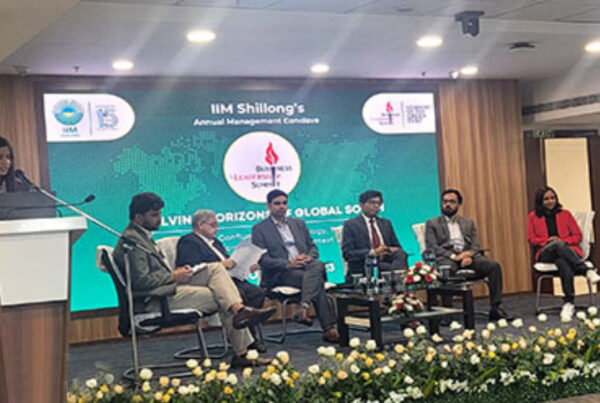A key question for financial service providers is how to deliver a user experience that meets the growing expectations and demands of customers. Amid the increasing significance of adopting a customer-first philosophy, the spotlight is on open banking solutions or open banking data.
Open banking as a financial service has revolutionized money management and changed the customer service landscape. Its rewards and benefits for banks and other financial institutions notwithstanding, open banking services are an equally punishing domain. One unpleasant experience suffices to send the customer away.
Customer experience or CX has, thus, become the top priority for financial service-providing companies.
First, what do the numbers say?
Open banking is a growing market, with strong prospects. According to Statista, the users of open banking services globally are expected to increase annually at an average rate of nearly 50% over 2020 to 2024. Their number is projected to reach 132.2 million worldwide by 2024 from 24.7 million as of 2020. Europe would be the largest market, with open banking users slated to grow from 12.2 million in 2020 to 63.8 million by 2024.
Surge in digital payments – powered by fast growth in payment methods (payment gateway APIs used in open banking), increase in e-commerce, better broadband access, and emergence of new technologies – is driving growth in the market.
Why open banking is crucial to CX?
Satisfying customers and providing quality service to meet customer expectations are the topmost priorities for financial institutions and financial services providers today. Open banking and open banking application program interfaces (APIs) have emerged as a prominent solution for a transparent, convenient and hassle-free transaction experience.
From the customer perspective, open banking helps in enhancing engagement by facilitating a safe financial transaction.
In the digital era, customers are looking for modernization of services. Traditional or conventional banking operations fall short in this regard. They are often dubbed time-consuming and tedious. Open banking, on the other hand, is a distinct practice based on innovation. Indicative of a forward-looking approach, it helps in improving brand value or perception of banks.
Given the demands of a modern customer, smart solutions are required that facilitate multiple actions simultaneously. Open banking with APIs does just that: whether it is making payments, or recharging, or availing of financial offerings in real time.
Therefore, open banking APIs are critical for attracting customers and retaining them. These innovative solutions especially appeal to younger demographic profiles, such as Gen Z or millennials who have high digital dexterity.
Open banking APIs are essential in personalization of services. Offering customized services adds significant value to customers. It paves the way for frequent interaction and engagement.
Moreover, leveraging these solutions, banks can broaden their scope of operations beyond the traditional or conventional services. For example, by integrating the APIs of third-party providers (TPPs), banks can engage with digital markets, too.
Additionally, given the high value of open banking services, APIs can be accretive to banks’ earnings.
Where to start with CX?
In the financial services sector, winning over customer loyalty is even more critical. The transactions are highly fluid, involving hundreds of financial institutions. In open banking, or in the open financial system, which involves customer-authorized sharing of data between different institutions, winning customer confidence is the key. CX has a direct bearing on the earnings of an institution.
Prudent strategizing is a must.
Focus on building customer confidence. Meeting customer expectations is the key to attracting and retaining them.
The pain points that dent personalization of services. Start by making a note of the challenges that could lead to abandonment of the open banking transaction:
- Complexity of the identity authentication process and approval for use of data, such as caused by stringent login and password steps
- Lack of detailed knowledge sharing with the customer regarding use of the processes
- Striking the right balance between prevention of digital crimes and simplification of processes for personalization for good CX
- Incorporating feedback from listening to the customer
- Getting visibility on customer journey
- Demographics that can present a challenge – what approach must you adopt to win over those resistant to try open banking services
The next steps in building strong customer experience
Do you really know your customers? You may think you do, but in reality, you may not.
It has been nearly three years since the start of open banking, but it is yet to make the desired inroads. A key factor is the poor perception of open banking. While it has transformed from a “nice-to-have” into “a necessity”, banks or other financial service providers will be wrong to assume that consumers are comfortable with it.
As it stands today, open banking is much misunderstood.
According to a February 2022 article, published in The Paypers (a Netherlands-based news and analysis provider for the global FinTech, payments, and e-commerce industry), open banking strikes fear in the minds of most people. This is because of the third-party provider (TPP) access to customer data in online or digital services.
As an aftermath of the pandemic, data consciousness among consumers has increased manifold. So has their concern for privacy.
Sharing data with non-banks means institutions and individuals can use their own data to improve money management. But sharing financial data is difficult because of the uncertainty attached. Often people are not comfortable sharing info with third-party financial service providers. They are also unaware of open banking being regulated by central authorities, such as the Financial Conduct Authority (FCA) in the UK and its European equivalents, or the National Payments Corporation of India (NPCI) in India which owns and operates the United Payment Interface (UPI).
Therefore, banks and other financial institutions need to do a better job at explaining open banking to consumers. You must educate them on its benefits: whether in speeding up payments, consolidation of all information at one location, faster generation of invoices, or speedier access to loans.
Focus more on the older people, who may struggle with technology. The younger generations, such as millennials or Gen Z, may not need that support. Educate the older section about the regulations, the safety/security of transactions. Adopt a part-human, part-machine approach to interact with the consumers.
Be empathetic. Understand the needs of the different customer groups and cater to them accordingly.
Explain the mandatory aspect of rules and regulations for TPPs. Be clear about how their personal information will be shared; where it will be stored; and how its confidentiality is guaranteed. This could assuage their concerns.
Mindless innovation is a waste of time and resources. To adopt the right approach to innovation, be customer-centric while adding capabilities. Add digital capabilities to meet the requirements of consumers, such as just-in-time information, nudges or alerts.
According to an article in The Financial Brand, a digital publication focused on strategic marketing in retail banking, digital and experience leaders should lead the switch to open banking.
The focus should be on enhancements that will add more value to the customer. For instance, when large banks offered account aggregation (i.e., balance from all providers aggregated on a single page). Customers soon tired of it because it was a cumbersome process, although it met their requirement. But when banks used external data to facilitate account-to-account transfers, it picked up. Now the customer had an external account and could fetch the balance after making a transfer.
Capability enhancements are a good way to drive CX.
Ask the right questions. Open banking throws up vast amounts of data. How you interpret this will make the difference. Study the metrics incisively to create features that will reduce the time of transaction. Open banking is all about fewer and safer transactions. But if you are wrongly interpreting data to develop more cumbersome additions, people will reject it.
Ensure all customer touchpoints are in the loop for a holistic and consistent experience. Don’t be digital-only while innovating. Include all customer-facing members, such as call center representatives or live chat representatives. So, if a customer walks into a branch to inquire about a functionality or the lack of it on an app, the customer-facing team does not find itself in a tough spot, unable to explain. This will avoid frustration on both sides: team members and customers.
Don’t lose empathy at any point. Place yourself in the customer’s position. You need to understand their mindset, the queries, the confusions. This will help you understand the relevance of having human interaction, or interface, even when you follow a multichannel approach.
Can you do without AI? Artificial Intelligence (AI) is a powerful tool in delivering seamless services to customers. Integrating AI in open banking can help organizations to broaden their offerings. Data, coupled with analytics, will help in improving money management.
AI holds prospects for open banking. It will provide greater visibility on finances, enhancing control; increase the convenience of banking; aggregate data on spending, including loyalty or other rewards, earned; keep a track of savings, including advice on saving or budgeting; increase the efficiency of cash-related processes; provide personalized insights, etc.
Platforms integrated with AI and machine learning (ML) are well-equipped to collect data on customer experience. You can use these technologies to map a customer’s journey, and figure out the pain points. You can then rectify these. Also, with the help of the data obtained, you can understand trends and patterns in consumer behavior.
While the advancement of algorithms and cognitive technologies will have a deep impact in speeding up open banking and boost its adoption, organizations need to be cognizant of the vulnerabilities. You need to ensure adequate protection from risks, such as frauds, errors or biases.
Ensure all processes/operations and sharing of information are highly secure, with zero scope for leakage or stealth of data.
To conclude
In the current economic environment, people are increasingly evaluating their financial priorities. They want greater control over financials, security of data, and speedier money management.
This opens significant possibilities for open banking. The domain is relatively new and untested, with considerable scope for experimentation with innovative and customized products.
The space is crowded with several competitors in the fray. Demand is strong. Technology is advancing at a rapid pace, with analytics and AI staring at us. Accessibility to banking, especially in developing countries, is on the rise. Open banking here is particularly relevant from the perspective of financial inclusion.
It may be tough to deliver a unique experience to consumers, especially when there are many competitors in the fray. The differentiation lies in gaining the first-mover advantage in terms of knowing and understanding your customers. The deeper insight you have into their concerns and pain points, the different requirements from region to region, or economy to economy, the more effective and personalized your open banking services will be.
For more information on our research services and consumer insights, please connect with SuyogKeluskar, Director at Avalon Global Research.




